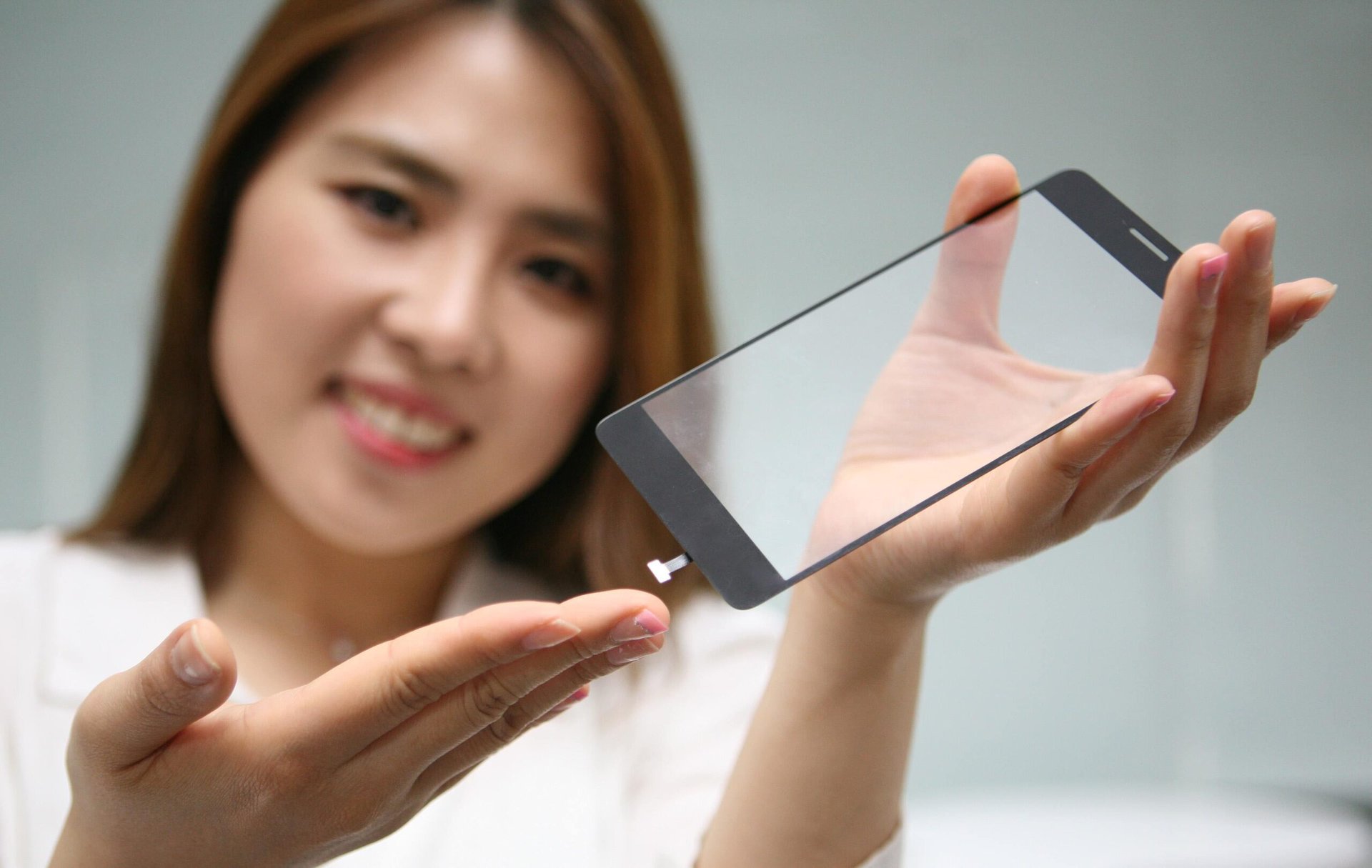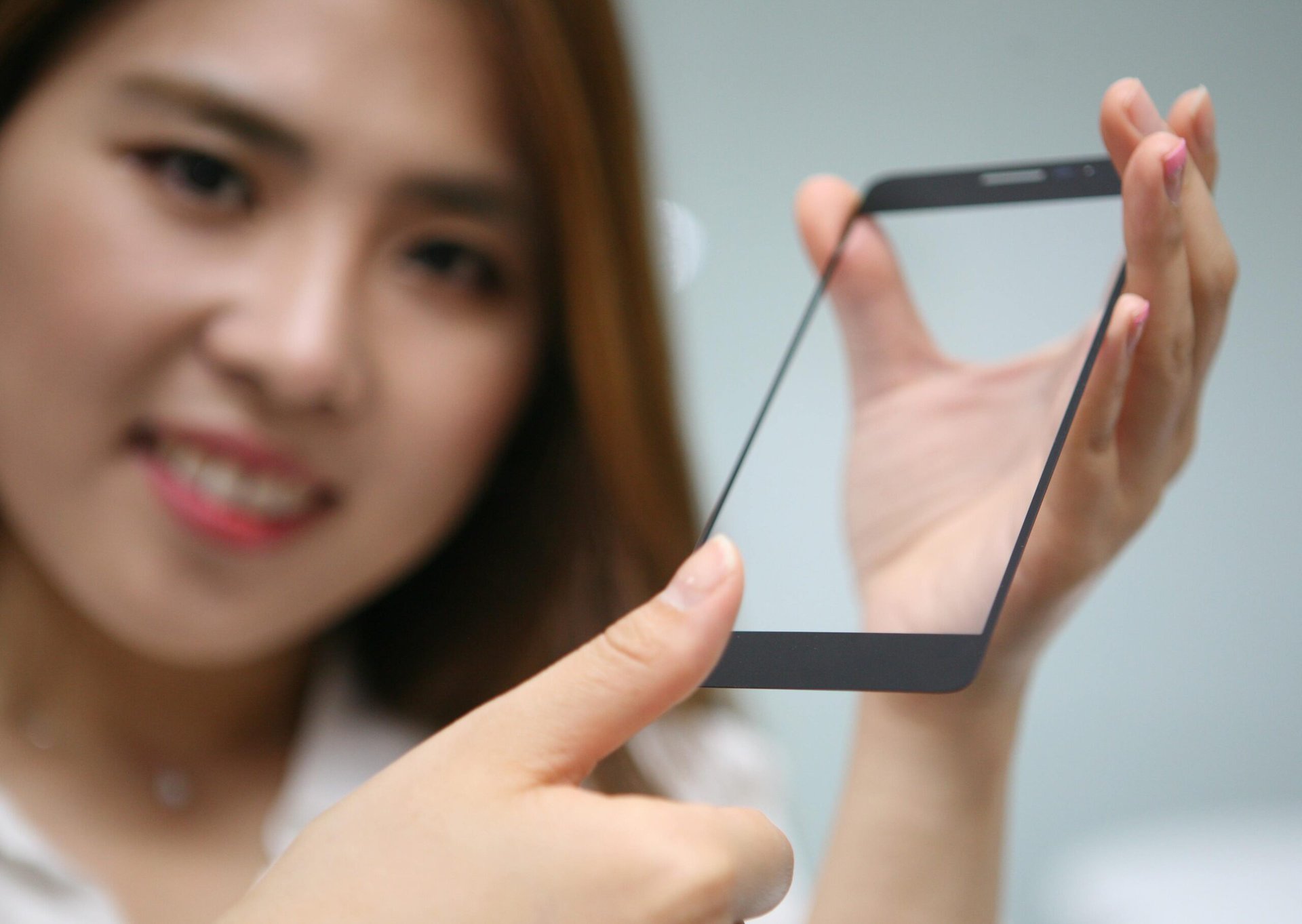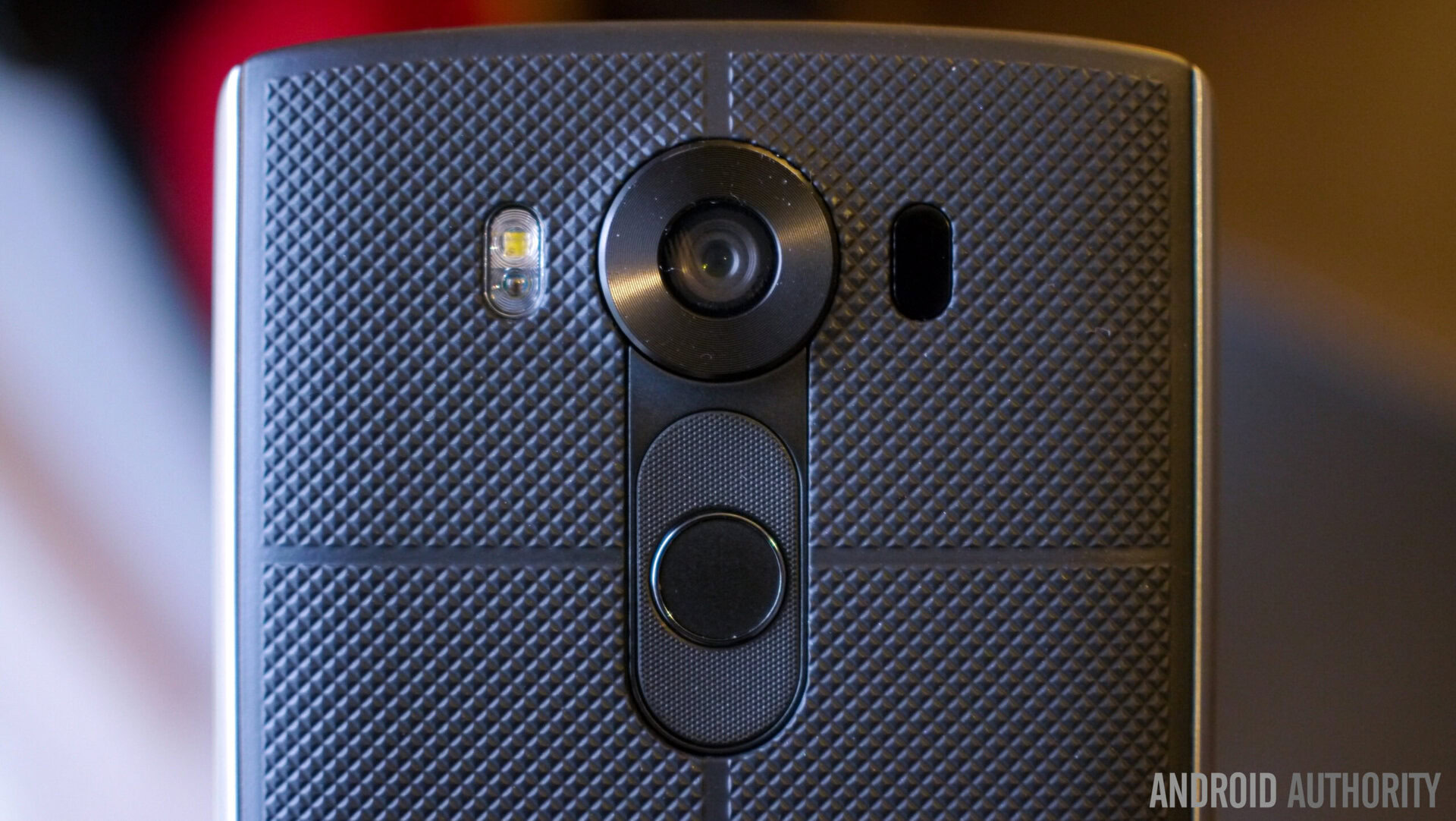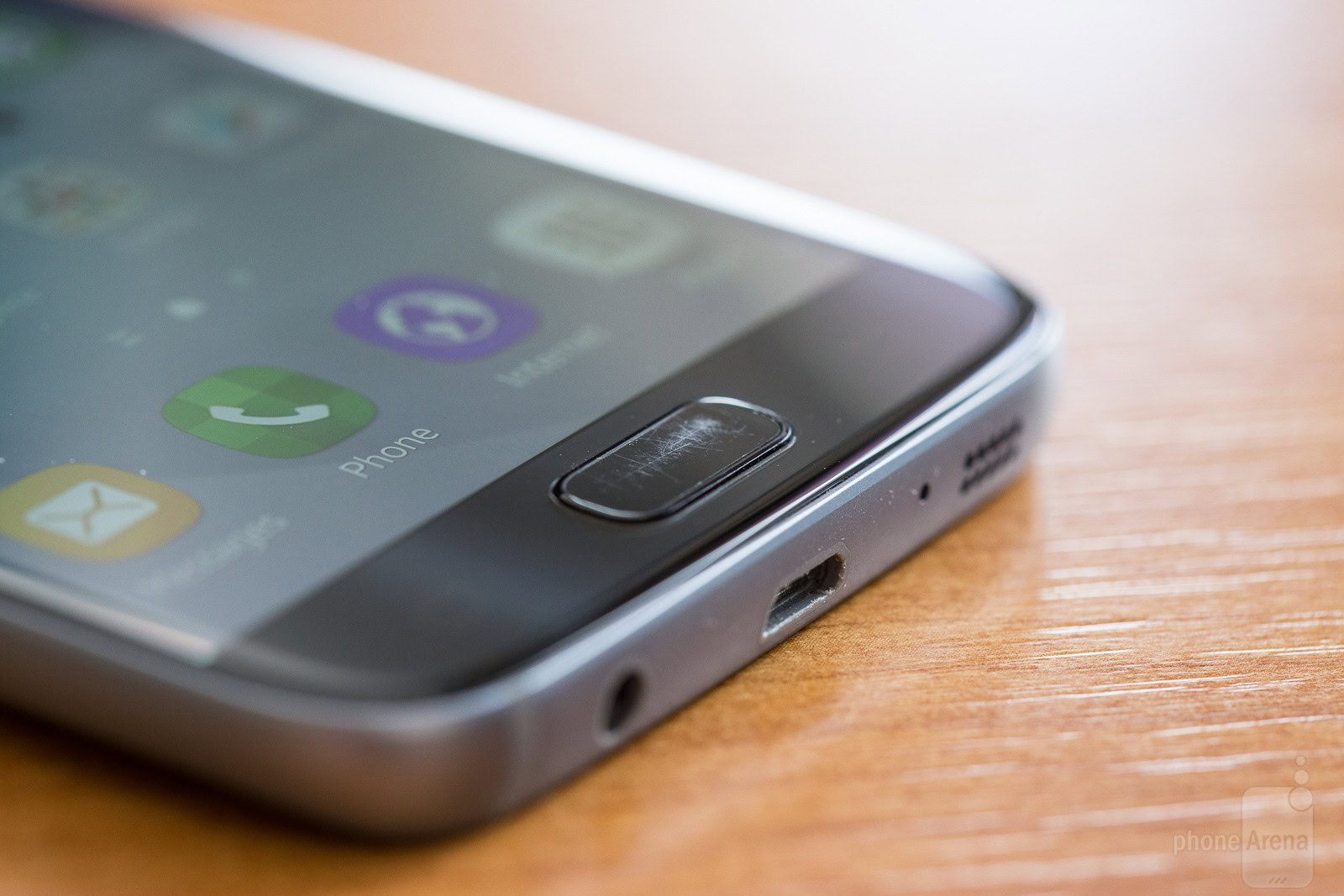Affiliate links on Android Authority may earn us a commission. Learn more.
Under the screen: LG's new fingerprint sensor can neither be felt nor seen

Life may be sweeter under the sea, but it’s clearly safer under the screen. As biometric security becomes more common on our devices, the problem of placement has become a proper predicament. Whereas companies like LG and HUAWEI have been keen to keep fingerprint readers on the back – where they can’t be seen – others like Samsung, Apple, and now HTCare placing them on the bottom bezel. Then there was Sony which decided to slide the unit off to the side. LG Innotek however, may have solved the problem entirely: put it under the screen.
By cutting a 0.01 inch (0.03mm) sliver out of the lower backside of the “coverglass”, LG was able to place a fingerprint sensor inside “[sic] using their supreme precision and combination technology.” The result is a module that “[sic] gives the freedom of the smartphone design and even enhances the user-friendly function, for example, waterproof or protection from scratches.”

The company further explains as follows:
[sic] High-strength cover glass protects the sensor and prevents it from coming in direct contact with water or damage from scratches.At the same time, the new module secured the fingerprint recognition accuracy compared to the button type. The new module has a false acceptance rate (FAR) of 0.002%. The FAR is the probability that the system falsely recognizes someone else’s biometric information as that of the user.The adherend side of the sensor and glass is only 0.0098inches (0.25mm) thick, but it endures impact of 4.6 oz (130grams) of the steel ball dropped from 7.9inch (20cm).
The head of LG Innotek’s R&D Center had made the following statement about the new development.
We are concentrating on all our resources to the development of the differentiated technology based on the creation of customer values. We will continue to provide convenient, safe, and pleasant user experiences by launching innovative product.
According to market research firm IHS, fingerprint sensor sales are expected to reach 1600 million units in 2020, making this technology a very solid and potentially [in]visible part of our daily lives.
Unseen in the Screen

This new development may usher in an entirely new wave of product design going forward, as well as a potential profit boon for LG should rivals such as Samsung either fail to duplicate the process or else shun it entirely. People have long commented about the large bezels on Apple’s iPhone products, for example, due to the presence of the Home button. Reports have suggested that Apple may in fact be seeking to remove the mainstay element in its 2016 or 2017 refresh suggesting it could be considering technology like that which LG has presented.
On the other hand, companies like Samsung seemingly need to keep the Home button where it is to justify the placement of its staple-capacative buttons which flank either side of it. The removal of one – or both – would fundamentally alter the immediately recognizable design of its products. Indeed the same could also be said of Apple.
At the very least, placing the fingerprint sensor inside the display would potentially eliminate issues such as this one which Ray S. of Phone Arena recently posted about:

Of course, since many companies have also doubled the fingerprint sensor as a power or home button, some users might find it vexing to “remove” the functionality of a button that does double duties.
What do you think? Is this new development a major step forward in the future of biometric security, or do you actually prefer to have the fingerprint sensor in a physical button or location on the device itself?
[press]
LG Innotek unveiles innovative fingerprint sensor module without button
Seoul, Korea, May 1, 2016 – LG Innotek (CEO Jongseok Park) today announced an under glass fingerprint sensor module. It means you just placed your finger on the cover glass of the phone and then it identifies your fingerprint.
This module gives the freedom of the smartphone design and even enhances the user-friendly function, for example, waterproof or protection from scratches.
Previous ‘button type’ modules required you to press a finger on a raised square or circular button for your fingerprint to be read exactly, so the sensor was usually mounted on the front, rear or side buttons of a smartphone.
LG Innotek cut a shallow furrow of 0.01inches (0.3mm) thick on the lower backside of the cover glass and installed the fingerprint sensor inside of it with using their supreme precision and combination technology.
With this module, the sensor is not exposed to the outside of the device, so manufacturer can produce a sleek designed smartphone. Fingerprint recognition area also can be indicated by various patterns up to design of complete product.
High-strength cover glass protects the sensor and prevents it from coming in direct contact with water or damage from scratches.
At the same time, the new module secured the fingerprint recognition accuracy compared to the button type. The new module has a false acceptance rate (FAR) of 0.002%. The FAR is the probability that the system falsely recognizes someone else’s biometric information as that of the user.
LG Innotek developed a proprietary adhesive to be used to attach the sensor to the glass, securing the commercialization scale of the durability including high impact absorption.
The adherend side of the sensor and glass is only 0.0098inches (0.25mm) thick, but it endures impact of 4.6 oz (130grams) of the steel ball dropped from 7.9inch (20cm).
LG Innotek expects that demand for fingerprint recognition technology will dramatically increase due to the expansion of the mobile payment market, has a plan to secure the new customer.
Market research firm, IHS, reports approximately 499 million fingerprint sensors have been sold globally in 2015 and expects that number will increase to 1600 million units in 2020.
Changhwan Kim, Head of the company’s R&D Center said, “We are concentrating on all our resources to the development of the differentiated technology based on the creation of customer values.” “We will continue to provide convenient, safe, and pleasant user experiences by launching innovative product.”
[/press]